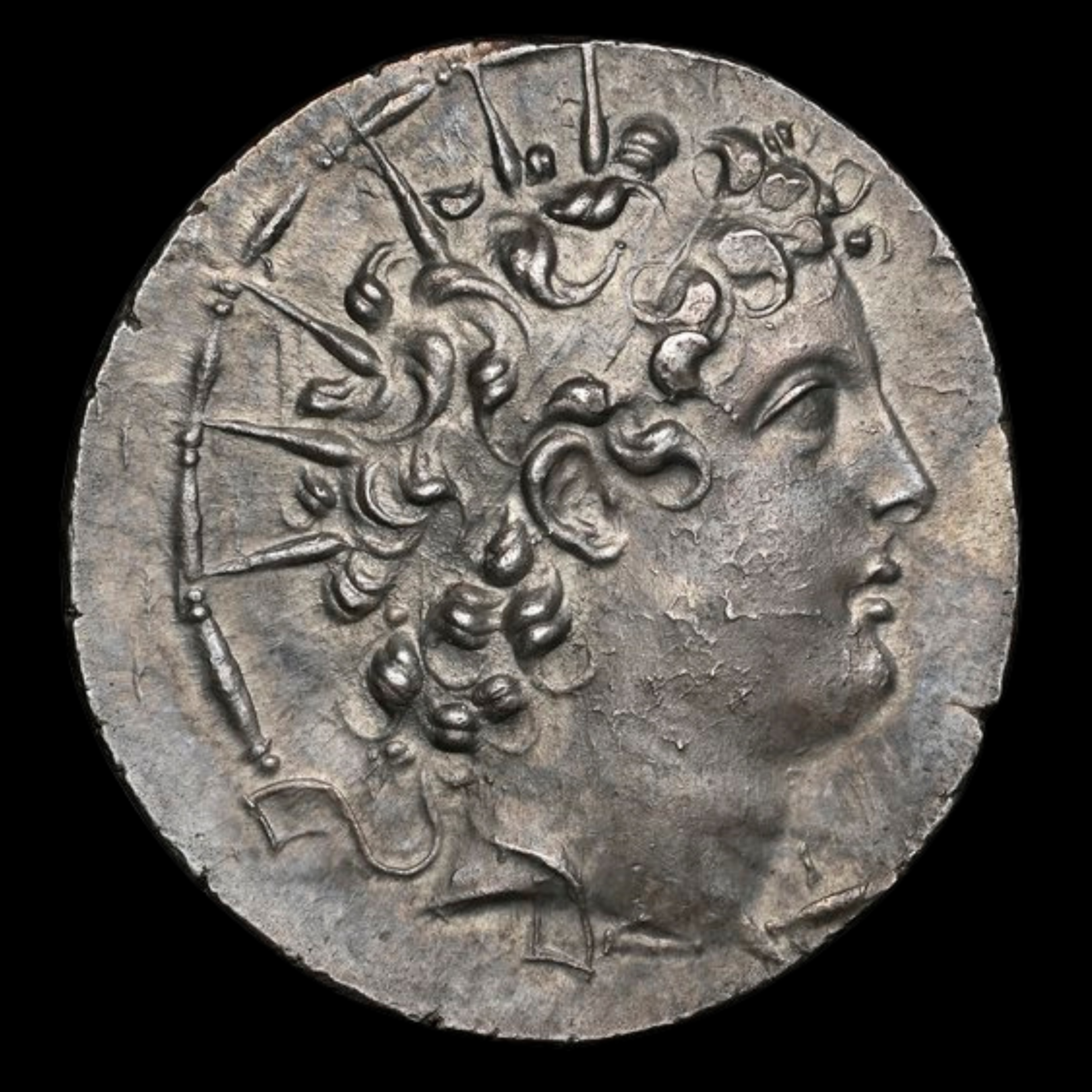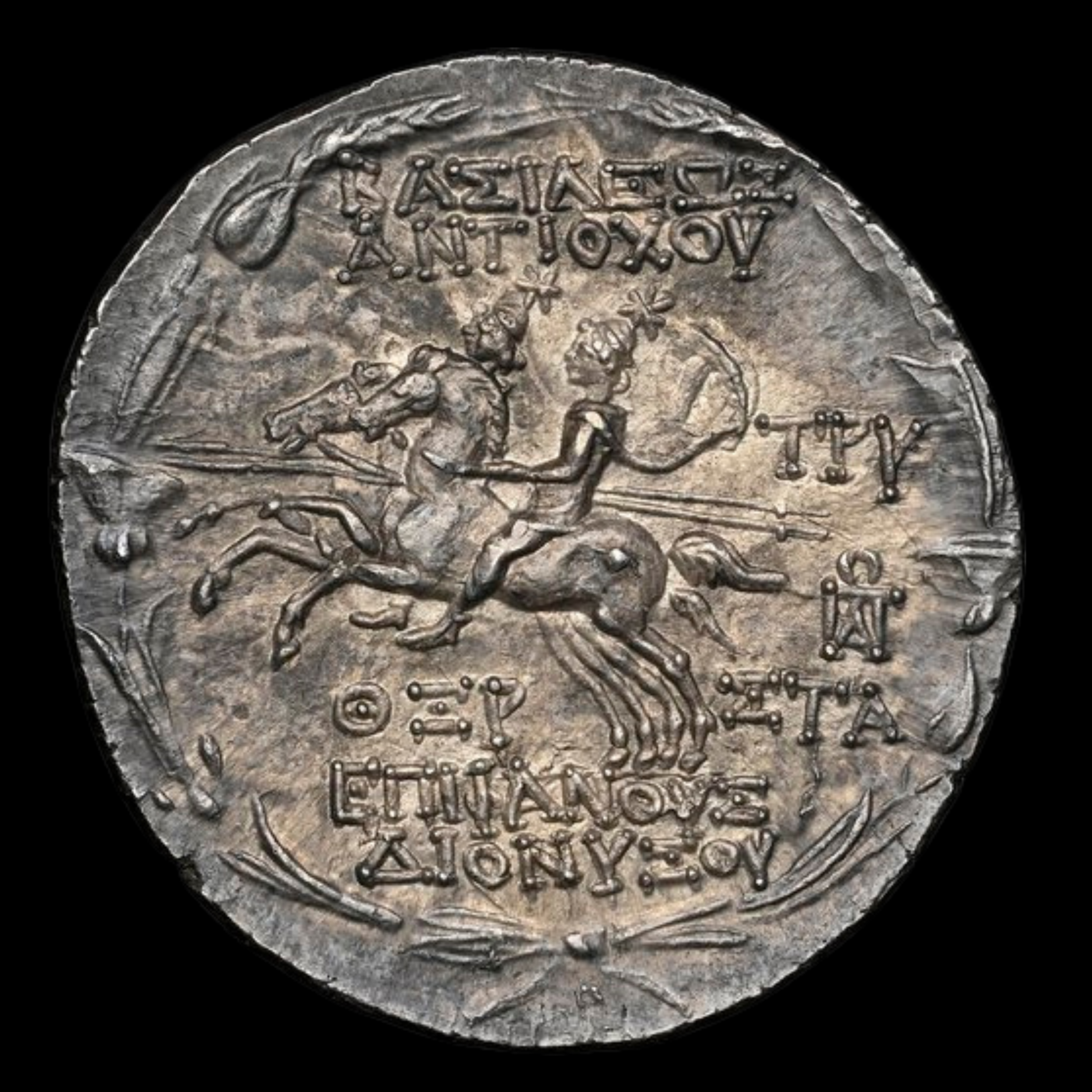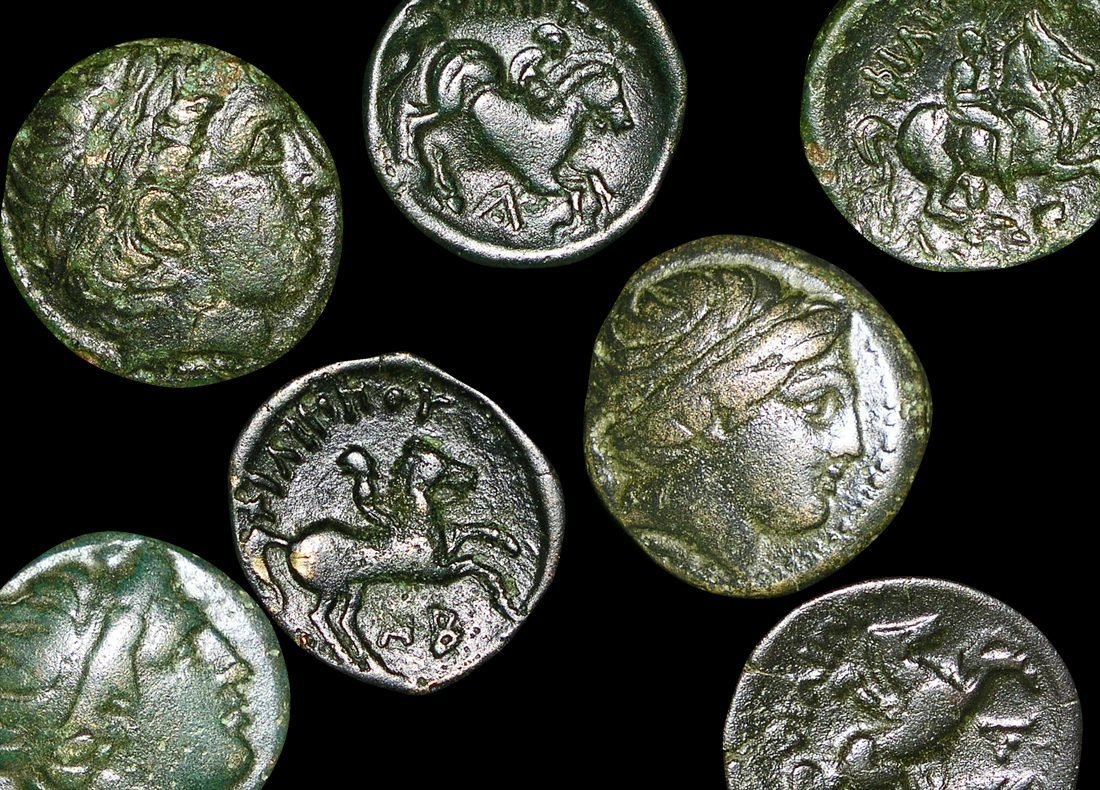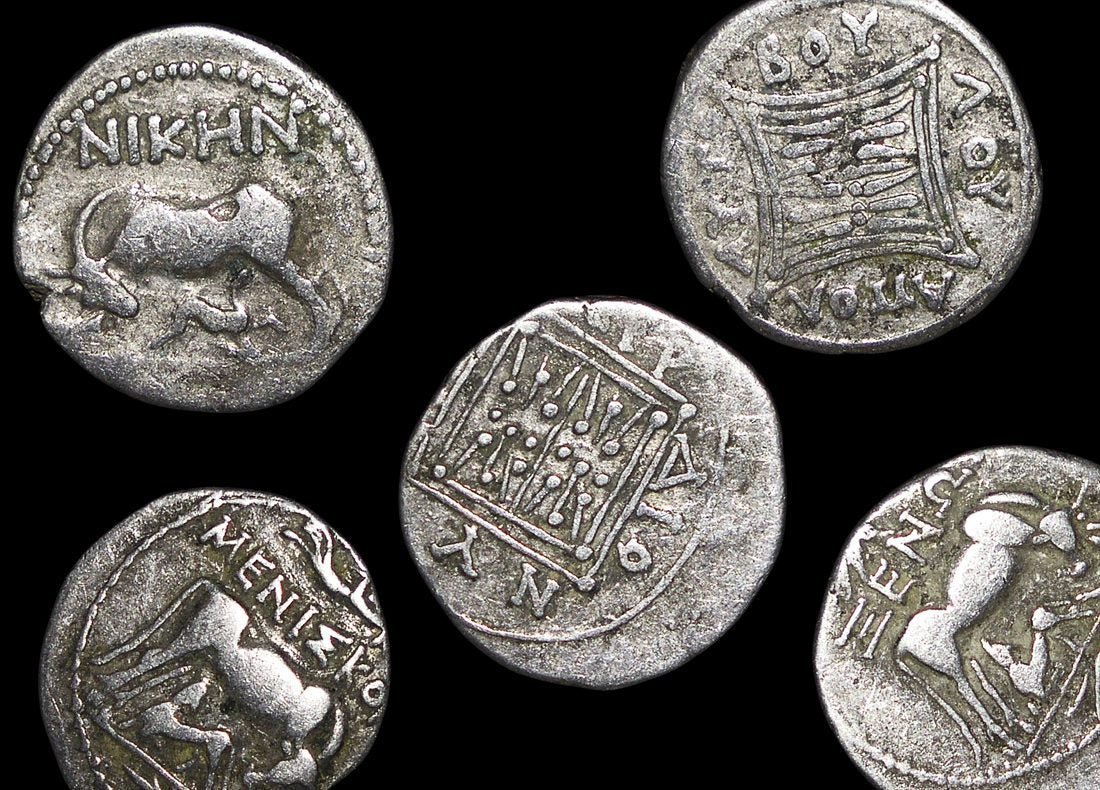 Image 1 of 4
Image 1 of 4

 Image 2 of 4
Image 2 of 4

 Image 3 of 4
Image 3 of 4

 Image 4 of 4
Image 4 of 4





Seleucid Kingdom Silver Tetradrachm (Large Silver Coin) of Antiochus VI (about 2165 years ago)
This remarkable silver tetradrachm was struck during the brief reign of the child-king Antiochus VI at the Seleucid mint of Antioch (modern-day Antakya in southern Turkey). Minted in 144/3 BC, corresponding to Year 169 of the Seleucid Era (the calendar system used by the Seleucid Empire), it represents a fascinating glimpse into a tumultuous period of succession struggles following the Seleucid Empire's decline from its former glory.
Coin Description:
Front side: The portrait of young King Antiochus VI is depicted, showing him as a child with characteristic features that emphasize his youth. The portrait likely shows idealized features, as was common for royal coinage, though still indicating his status as a child ruler.
Back side: The divine twins known as the Dioscuri (Castor and Pollux) are shown mounted on horseback. These legendary brothers were revered as protectors and patrons of horsemen and travelers throughout the Greek world.
Technical Details:
Silver (AR) composition
Tetradrachm (a large denomination equal to four drachms, representing significant purchasing power)
Certification: NGC Grade AU (About Uncirculated), with exceptional Strike: 5/5, Surface: 4/5
Dated to 144/3 BC (Year 169 of the Seleucid Era)
Minted in Antioch
Condition: About Uncirculated (showing minimal wear, indicating limited circulation)
Historical Significance: This coin represents a critical moment in Seleucid history when the empire was weakening under internal conflict. The child-king Antiochus VI was merely a political pawn used by General Diodotus Tryphon to legitimize his own power grab. The young ruler's suspicious death after only two years on the throne highlights the dangerous political intrigues of the era. The Dioscuri imagery symbolized divine protection during this unstable period, when the once-powerful empire founded by Alexander's general Seleucus was fracturing under rival claims to the throne and territorial losses.
This remarkable silver tetradrachm was struck during the brief reign of the child-king Antiochus VI at the Seleucid mint of Antioch (modern-day Antakya in southern Turkey). Minted in 144/3 BC, corresponding to Year 169 of the Seleucid Era (the calendar system used by the Seleucid Empire), it represents a fascinating glimpse into a tumultuous period of succession struggles following the Seleucid Empire's decline from its former glory.
Coin Description:
Front side: The portrait of young King Antiochus VI is depicted, showing him as a child with characteristic features that emphasize his youth. The portrait likely shows idealized features, as was common for royal coinage, though still indicating his status as a child ruler.
Back side: The divine twins known as the Dioscuri (Castor and Pollux) are shown mounted on horseback. These legendary brothers were revered as protectors and patrons of horsemen and travelers throughout the Greek world.
Technical Details:
Silver (AR) composition
Tetradrachm (a large denomination equal to four drachms, representing significant purchasing power)
Certification: NGC Grade AU (About Uncirculated), with exceptional Strike: 5/5, Surface: 4/5
Dated to 144/3 BC (Year 169 of the Seleucid Era)
Minted in Antioch
Condition: About Uncirculated (showing minimal wear, indicating limited circulation)
Historical Significance: This coin represents a critical moment in Seleucid history when the empire was weakening under internal conflict. The child-king Antiochus VI was merely a political pawn used by General Diodotus Tryphon to legitimize his own power grab. The young ruler's suspicious death after only two years on the throne highlights the dangerous political intrigues of the era. The Dioscuri imagery symbolized divine protection during this unstable period, when the once-powerful empire founded by Alexander's general Seleucus was fracturing under rival claims to the throne and territorial losses.









